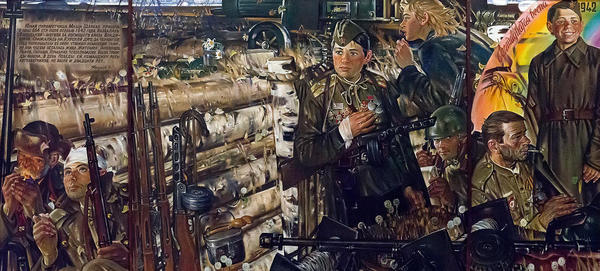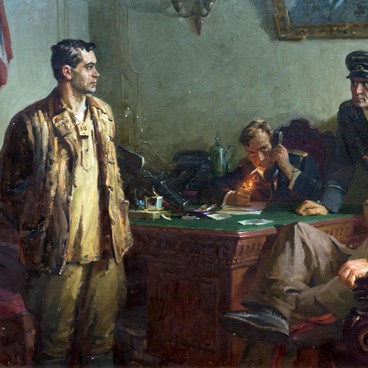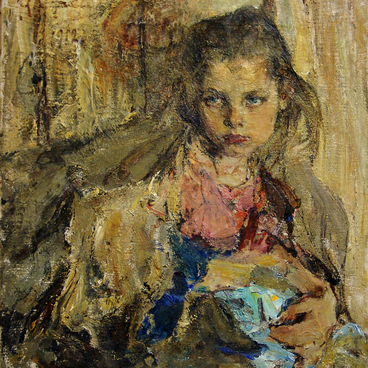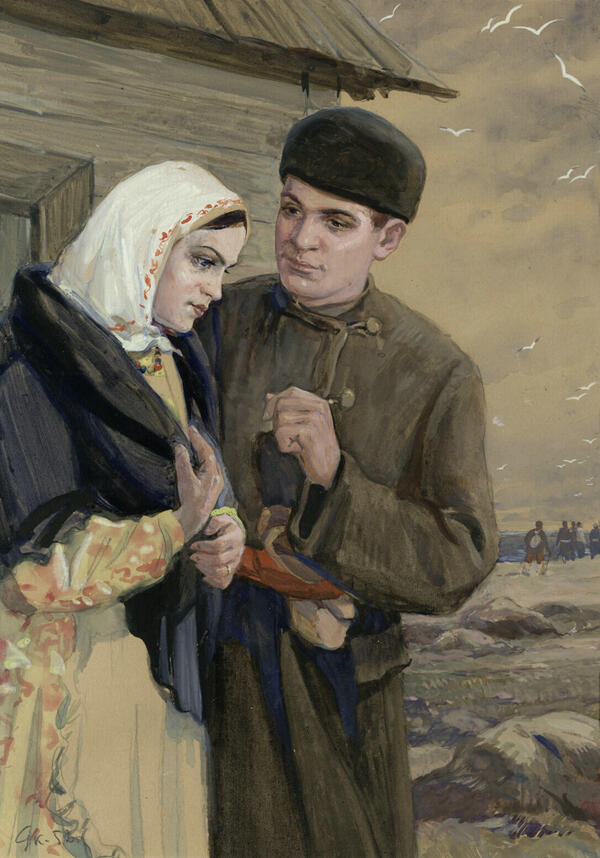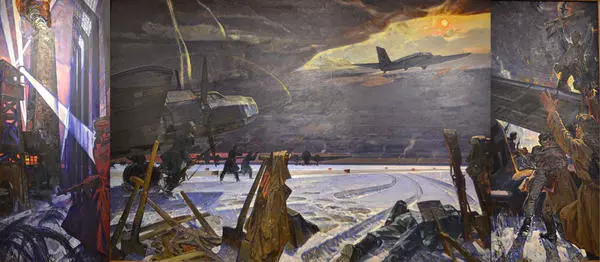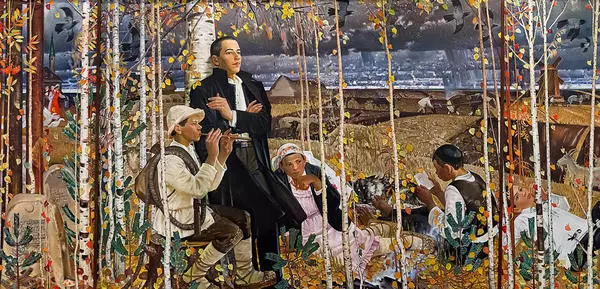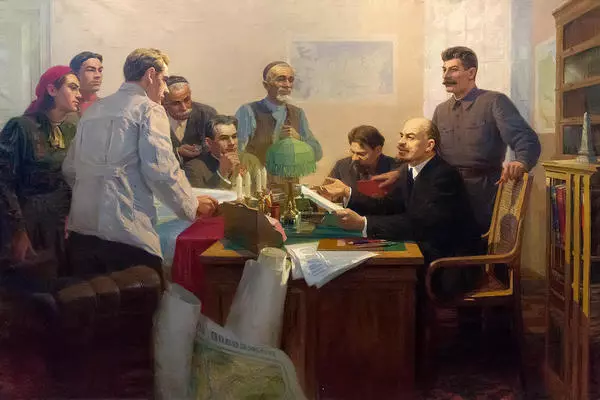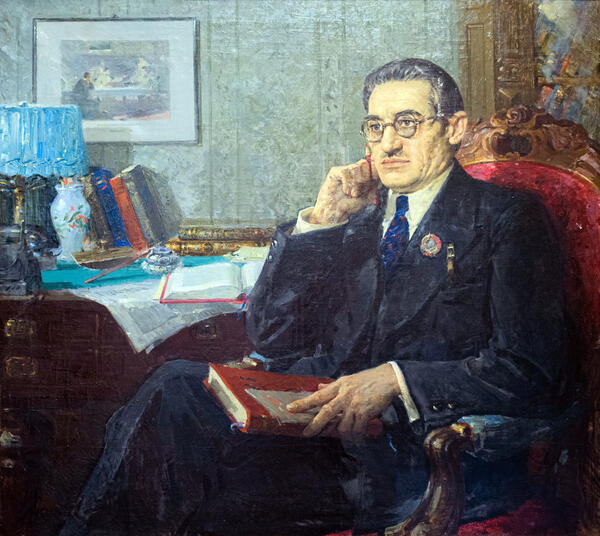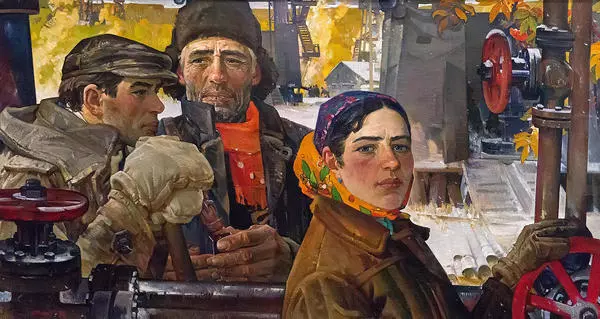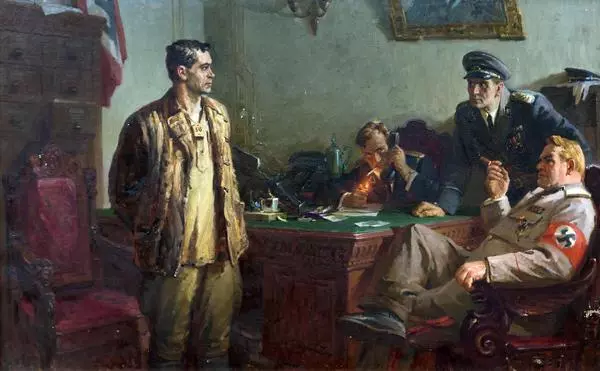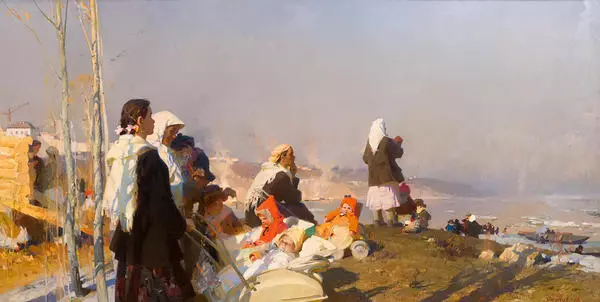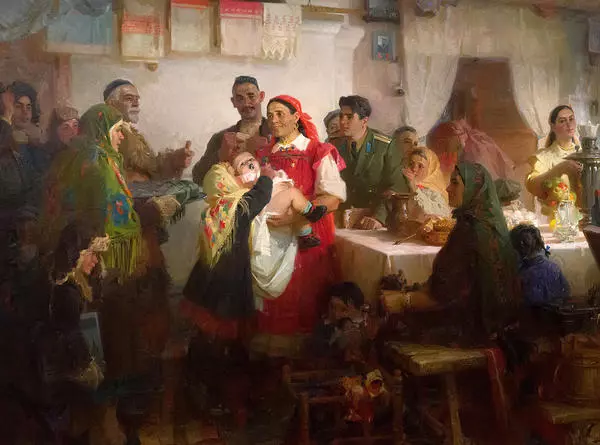Young artist Kharis Yakupov picked up a brush again after he had come back from the front in 1946. The Great Patriotic War defined his artistic path, provided patriotic orientation to his paintings. He was on the frontline from the first day of the war to its last. Reflecting on the war, the artist especially admired his female fellow soldiers, who had fought with him in the 654th rifle regiment. Machine-gunner Mariya was one among those whom Yakupov remembered the most.
They met when a new fighter Volod’ka had come to the rifle regiment. He was exposed after the first injury: Volod’ka turned out to be a girl Mariya Shcherbak. She decided to avenge her brothers and dad’s death, left her home secretly and managed to convince the war office to let her fight despite her age. She learnt machine-gun shooting and was enlisted to machine-gun division disguised as a man. She called herself Volod’ka in memory of her brother Vladimir.
While portraying, Yakupov wrote: ‘The more I work on the painting, the more clear becomes a far-off image of the girl in a soldier’s blouse - as if it’s coming to me from my past’…The portrait is based on frontline sketches, in which the artist had painted his fellow soldier with incredible lyricism and admiration. Young, with delicate features and dramatic look, she embodies resilience and courage.
The heroine in the central part and the persons nearby exemplify different moments of war time. On the central composition Mariya Shcherbak appears as a heroic soldier, who has performed a feat. On the left side of the painting, fighters laid low in between battles. On the right side of the triptych against a backdrop of rainbow, the artist portrayed a soldier-teenager, who hadn’t experienced the horrors of war.
The artist fills the painting with numerous details, but they are not accidental. Each item, whether it’s a gun, a camp pot or a lucky horseshoe, supplements the depiction of war life. Granularity of the composition, hard graphic technique, contrast colour mixes help get a sense of war life.
They met when a new fighter Volod’ka had come to the rifle regiment. He was exposed after the first injury: Volod’ka turned out to be a girl Mariya Shcherbak. She decided to avenge her brothers and dad’s death, left her home secretly and managed to convince the war office to let her fight despite her age. She learnt machine-gun shooting and was enlisted to machine-gun division disguised as a man. She called herself Volod’ka in memory of her brother Vladimir.
While portraying, Yakupov wrote: ‘The more I work on the painting, the more clear becomes a far-off image of the girl in a soldier’s blouse - as if it’s coming to me from my past’…The portrait is based on frontline sketches, in which the artist had painted his fellow soldier with incredible lyricism and admiration. Young, with delicate features and dramatic look, she embodies resilience and courage.
The heroine in the central part and the persons nearby exemplify different moments of war time. On the central composition Mariya Shcherbak appears as a heroic soldier, who has performed a feat. On the left side of the painting, fighters laid low in between battles. On the right side of the triptych against a backdrop of rainbow, the artist portrayed a soldier-teenager, who hadn’t experienced the horrors of war.
The artist fills the painting with numerous details, but they are not accidental. Each item, whether it’s a gun, a camp pot or a lucky horseshoe, supplements the depiction of war life. Granularity of the composition, hard graphic technique, contrast colour mixes help get a sense of war life.

